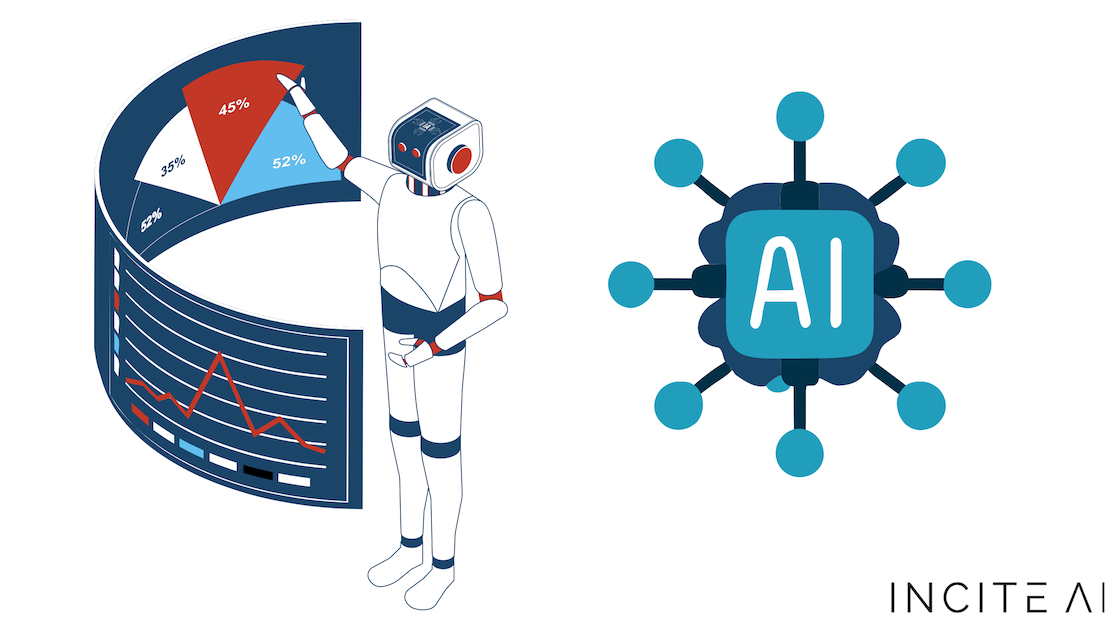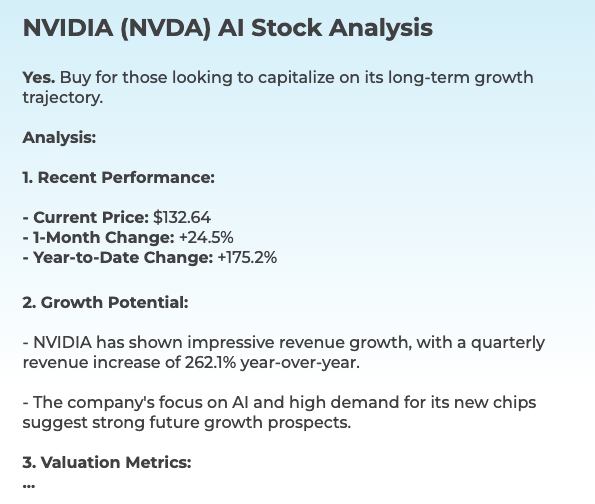20 Handy Tips For Deciding On AI Stock Analysis Sites
20 Handy Tips For Deciding On AI Stock Analysis Sites
Blog Article
Top 10 Tips To Evaluate Ai And Machine Learning Models Used By Ai Stock Predicting/Analyzing Trading Platforms
Analyzing the AI and machine learning (ML) models employed by trading and stock prediction platforms is vital to ensure that they provide accurate, reliable and actionable information. A model that is not well-designed or overhyped could result in incorrect forecasts and financial losses. Here are the top ten suggestions for evaluating the AI/ML models used by these platforms:
1. Understanding the purpose of the model and method of operation
Objective: Determine if the model was created for trading in short-term terms as well as long-term investments. Also, it is a good tool for sentiment analysis or risk management.
Algorithm transparency: See if the platform discloses types of algorithms employed (e.g. Regression, Decision Trees Neural Networks, Reinforcement Learning).
Customizability: Determine if the model is able to adapt to your particular trading strategy or your tolerance to risk.
2. Review the model's performance using metrics
Accuracy. Examine the model's ability to forecast, but do not depend on it solely since this could be misleading.
Recall and precision: Determine the accuracy of the model to detect true positives, e.g. correctly predicted price changes.
Risk-adjusted returns: Find out whether the model's forecasts will lead to profitable trades, after accounting for risks (e.g. Sharpe ratio, Sortino coefficient).
3. Check the model by Backtesting it
Historical performance: Test the model by using data from historical times to determine how it performed in past market conditions.
Out-of-sample testing: Ensure the model is tested with data it was not developed on in order to prevent overfitting.
Scenario-based analysis involves testing the accuracy of the model under various market conditions.
4. Make sure you check for overfitting
Overfitting sign: Look for models that are overfitted. These are models that do extremely well with training data, but less well on unobserved data.
Regularization techniques: Determine the application uses methods like regularization of L1/L2 or dropout to avoid overfitting.
Cross-validation - Ensure that the platform utilizes cross-validation to test the generalizability of your model.
5. Examine Feature Engineering
Relevant Features: Check to see whether the model is based on significant features. (e.g. volume prices, technical indicators, price and sentiment data).
Make sure to select features with care: The platform should only contain data that is statistically significant and not redundant or irrelevant ones.
Updates to features that are dynamic: Check whether the model will be able to adjust to market changes or to new features as time passes.
6. Evaluate Model Explainability
Interpretation: Make sure the model provides clear explanations for the model's predictions (e.g., SHAP values, the importance of features).
Black-box model Beware of platforms that use models that are overly complex (e.g. deep neural networks) without describing methods.
User-friendly insights: Make sure that the platform provides actionable insights in a format that traders can comprehend and apply.
7. Reviewing the Model Adaptability
Changes in the market: Check if the model is able to adapt to changes in market conditions, such as economic shifts or black swans.
Examine if your platform is updating its model on a regular basis with new information. This can improve performance.
Feedback loops: Ensure the platform incorporates user feedback or real-world outcomes to refine the model.
8. Be sure to look for Bias and Fairness
Data bias: Ensure the training data is representative of the market and free from biases (e.g., overrepresentation of certain areas or time frames).
Model bias - Check to see whether your platform is actively monitoring the biases and reduces them in the model predictions.
Fairness - Ensure that the model isn't biased towards or against certain sector or stocks.
9. Evaluate the effectiveness of Computational
Speed: Determine whether the model produces predictions in real-time with minimal latency.
Scalability - Verify that the platform can manage large datasets, multiple users and not degrade performance.
Resource usage : Check whether the model has been optimized to use computational resources effectively (e.g. GPU/TPU).
Review Transparency and Accountability
Model documentation: Ensure the platform is able to provide detailed documentation on the model's design, structure as well as its training process, as well as the limitations.
Third-party Audits: Verify that the model has been independently verified or audited by third organizations.
Error handling: Check if the platform has mechanisms to identify and fix mistakes or errors in the model.
Bonus Tips
User reviews and Case studies: Review user feedback, and case studies in order to assess the performance in real-world conditions.
Trial period for free: Try the accuracy of the model and its predictability with a demo or free trial.
Support for customers - Ensure that the platform you choose to use is able to provide robust support in order to resolve the model or technical problems.
By following these tips You can easily evaluate the AI and ML models on stock prediction platforms, ensuring they are reliable and transparent. They should also be aligned with your trading objectives. Have a look at the top rated https://www.inciteai.com/ for more tips including investing ai, stock ai, ai trading, incite, stock ai, using ai to trade stocks, ai trading tools, AI stock trading app, AI stock market, AI stock trading app and more.
Top 10 Things To Consider When Evaluating Ai Trading Platforms For Their Versatility And The Possibility Of Trial.
Before you commit to long-term subscriptions It is important to assess the options for trial and the potential of AI-driven prediction and trading platforms. Here are 10 top strategies for evaluating these features.
1. Try the Free Trial
Tips: Make sure that the platform you are considering has a 30-day trial to test the capabilities and features.
Free trial: This lets users to test the platform with no financial risk.
2. The Trial Period and the Limitations
Tips: Check the duration of your trial and any limitations you might encounter (e.g. limitations on features, limited access to information).
Why: Understanding the limitations of a trial could help you decide if it's a comprehensive assessment.
3. No-Credit-Card Trials
You can find free trials by searching for trials that don't require you to give your credit card details.
The reason: It lowers the risk of unexpected charges and also makes it easier to opt-out.
4. Flexible Subscription Plans
Tips - Make sure the platform provides flexible subscriptions (e.g. quarterly or annually, monthly) and clearly defined pricing levels.
Why: Flexible plans allow you to pick a commitment level that suits your needs and budget.
5. Features that can be customized
Look into the platform to determine whether it permits you to alter certain features such as alerts, trading strategies or risk levels.
The reason: Customization permits the platform’s adaptation to your specific requirements and preferences in terms of trading.
6. Easy cancellation
Tip: Assess how easy it is to cancel or upgrade an existing subscription.
The reason: A simple cancellation process ensures you're not locked into a plan that doesn't work for you.
7. Money-Back Guarantee
Tip - Look for sites that offer a guarantee of money back within a specific time.
The reason: It is security in the event the platform does not meet your expectations.
8. Access to all features and functions during Trial
Tips: Make sure that the trial includes access to the core features.
Why: You can make the right choice based on your experience by testing every feature.
9. Customer Support during Trial
Tip: Check with the customer support during the test time.
What's the reason? Dependable support guarantees that you will be able to resolve any problems and enhance your trial experience.
10. Feedback Post-Trial Mechanism
Check whether the platform asks for feedback from users following the test to improve the quality of its service.
The reason: A platform that is characterized by a the highest degree of satisfaction from its users is more likely to develop.
Bonus Tip Optional Scalability
Ensure the platform can scale with your needs, offering more features or plans at a higher level as your trading activities grow.
Before making any financial commitment take the time to review these trial and flexibility options to decide whether AI stock trading platforms and prediction are the best fit for you. Have a look at the top rated my response about how to use ai for copyright trading for site advice including AI stock analysis, AI stock price prediction, how to use ai for copyright trading, chart analysis ai, AI stock analysis, best AI stocks to buy now, chart ai trading, ai in stock market, chart analysis ai, how to use ai for copyright trading and more.